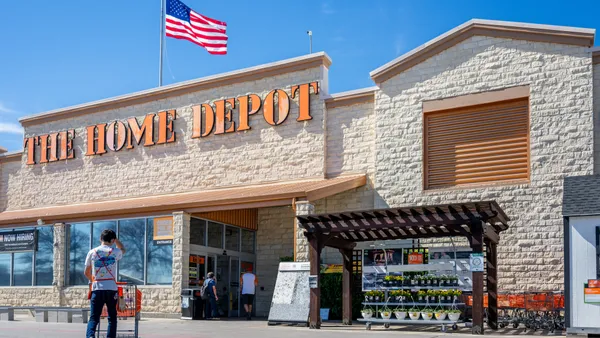Dive Brief:
-
Shares of yoga wear maker Lululemon Athletica slipped 9.2% in late trading Thursday after its second quarter report and forecast showed evidence of weakening demand for the firm's core athleisure apparel. Q2 net revenue grew by to $514.5 million, up 14% from $453.0 million in the second quarter of fiscal 2015, or increasing by 15% on a constant dollar basis. Adjusted earnings of 38 cents per diluted share beat Retail Metrics consensus estimates by a penny.
-
Lululemon's Q2 total comparable sales — same-store sales plus direct-to-consumer sales — rose 4%, or 5% on a constant dollar basis, the company said. Retail Metrics president Ken Perkins called the 4% rise “solid,” but said that missed consensus expectations for 5.2% rise. Q2 same-store sales increased by 3%, or by 4% on a constant dollar basis, while Q2 direct-to-consumer net revenue rose by 6% to $87.4 million, or by 7% on a constant dollar basis.
-
Lululemon said it expects Q3 net revenue to range from $535 million to $545 million, based on total comparable sales in the mid-single digits on a constant dollar basis and diluted earnings to range from $0.42 to $0.44 per share. That’s on the low end of analyst expectations for Q3 earnings of 44 cents per share on revenue of $542 million. For the full fiscal year, the company expects net revenue to range between $2.32 billion and $2.35 billion, based on total comparable sales in the mid-single digits on a constant dollar basis, and diluted earnings to range between $2.11 and $2.19 per share.
Dive Insight:
Earlier this summer Lululemon CEO Laurent Potdevin warned that so-called althleisure wear— clothing worn from the yoga studio and out and about town — would slip from its perch in contemporary fashion. Lululemon's stylish, flattering designs and patented wicking fabrics pioneered the trend, but the company has faced increasingly assertive competition in recent years from pretty much every other retailer that sells apparel, from Target and Gap to Nike.
Lululemon, aware that trends come and go, has moved to adapt, diversify and expand its offerings, but stylish apparel designed for settings outside the workplace isn’t much of a niche. It’s also what every other apparel retailer is aiming for.
"The athleisure market is extremely competitive, and Lululemon must come up with new and better ways to further the customer experience—both off and online—if they want to maintain profits," L2 researcher Elizabeth Elder told Retail Dive in an email. "Lululemon has made a number of digital advancements including a positive re-launch of the brand site and blog. The brand is also a leader in search, optimizing its SEM spend towards paid keywords such as 'yoga pants.' However, in today’s landscape of digital shopping, consumers have come to expect more—a simple refresh and a beautiful blog will not guarantee success."
The idea that Lululemon won’t have a way to continue to dominate has investors worried, and they sent its stock down more than 9% Thursday despite what Retail Metrics’ Perkins called its “robust” 14% revenue rise. But Potdevin said that the quarter’s results show signs of Lululemon's long-term potential.
"The second quarter demonstrated strong results as we delivered sales and [earnings per share] at the high-end of our guidance and saw an important inflection in our gross margin and earnings performance,” Potdevin said in a statement. "Our progress in the second quarter, especially in gross margin and inventory, marks the beginning of our recovery in profitability and sustainable long-term growth."













